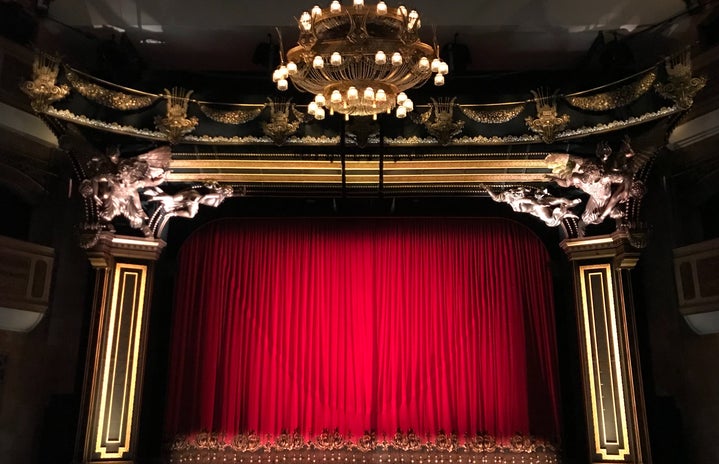The article below was written by Fernanda de Andrade and edited by Amanda Moraes. Liked this type of content? Check out Her Campus Cásper Líbero for more!
The art world just got sadder, especially for ballet dancers. On November 1st, we had the misfortune of losing one of the legends in Brazilian ballet, Hulda Bittencourt. The dancer and choreographer had a stroke on October 30th, and due to that, was hospitalized in Hospital Albert Einstein, in São Paulo.
Her death was informed by the dance company Cisne Negro, that she founded in 1977: “Brazilian culture lost one of its big supporters, an artist that always carried the pride of our roots wherever she went, with joy and personality”, stated the company and school on social media.
To celebrate her legacy and all the contributions she made for our culture, let’s remember her journey and achievements.
How It All Began
Born in Santa Cruz do Rio Pardo, in São Paulo, Hulda fell in love with ballet at a young age. If we have now all her influence in our culture, it’s due to one of Hulda’s friends, who practiced ballet when they were teenagers.
When she was four, Hulda moved to the capital of São Paulo, and joined the Escola de Bailado do Theatro Municipal de São Paulo, a dance school that was under the coordination of Maria Olenewa, a Russian ballerina that formed the first classes of professional ballet in Brazil. Hulda once stated that her mom took out money from the market-place purchase in order to buy her pointe-shoes.
Hulda makes justice to her icon title. She always knew she was an artist, but was too young to know how to show it. In an interview given in 2017, Hulda said: “I always wanted to express myself somehow, but I didn’t know how I could do that”.
Although she always loved the art universe and was fond of dancing, her father was totally against the idea of her following that passion, saying that it was not a profession of a respectable lady. Fortunately, she ignored her father’s opposition and, with her mother’s help, she stood up to him.
Thanks to that, Hulda became a ballet dancer, and later, founded her own school.
Cisne Negro And Male Ballet Dancers
After insisting for so long, her father gave up and became the new supporter in his daughter’s dance career. He also adapted a room in their house so she could teach beginners for some time.
Hulda’s career started when she was only seventeen. After Maria Olenewa’s course, she started to teach dance lessons at Conservatório Dramático e Musical Conselheiro Lafayette, an important music and drama school in São Paulo.
With her husband’s financial support, she founded the Estúdio de Ballet Cisne Negro. The chemist who married the ballerina, Edmundo, invested all he could in order to fulfill his wife’s dream. He adapted their loft into a building proper for dancing in 1959.
Hulda was truly happy and satisfied with where things were going. She was a successful ballet dancer, had opened her school and was teaching the new generation of ballerinas. She would not change a single thing.
At least that’s what she thought, until a group of male athletes from the Universidade de São Paulo (a prestigious university in the city), knocked on her door, asking her to give them lessons and let them dance. Until that moment, Hulda had only taught girls, so it was a no-no for her. The choreographer, at first, sent them away: “I looked at their hairy legs and thought: there is no way I am touching these boys legs”.
But, “Mama Hulda” (as she was dearly called) could not turn her back on people wanting to dance. So she let them stay, and opened the company we all know in 1977. One of the most influential ballet companies in the country was founded like that, as an “accident”. Hulda even admitted that she only founded Cia Cisne Negro for them, so they could dance.
The Professional Hulda Bittencourt
One of Hulda’s biggest aims was getting new audiences, and believed that it could only be achieved through beauty and innovation. She wanted to integrate dancing and physical education in one thing, so her artistry could be complete. Another thing that contributed to this was her formation. Besides Maria Olenewa, she also had Vera Kumpera, a big reference in contemporary dance, as her teacher, who always tried to combine acrobatics from physical education and classical dancing.
Alike many names in the dance industry in Brazil, Cisne Negro also faced financial problems. In 2012, Hulda said that “our situation is to always overcome obstacles”. One time, when everyone in the company had their money stolen, instead of cancelling things off, she went to the bank and asked for a loan, showing her persistent spirit.
Her Legacy
Hulda left a huge legacy behind. To honor the choreographer, teacher and ballerina she was, Cia Cisne Negro performed The Nutcracker (which was directed by her) for two days in November, in the 22nd and 23rd. The ballet has been performed every year near Christmas since 1984. Now the studio and the company Cisne Negro are being administred by her daughters Daniele (Dany) and Giselle Bittencourt.
Hulda inspired new generations of ballet dancers over the country since the moment she put her first pointe shoe on. Working on inclusion and fighting for the arts, she never thought about giving up, and as long as her teachings are passed to new ballerinas, her legacy will live on.


